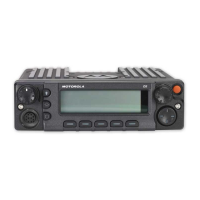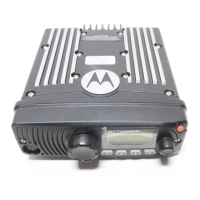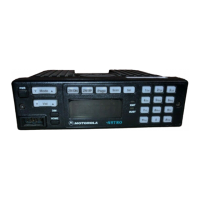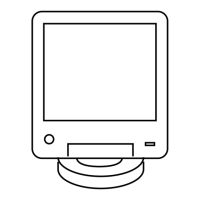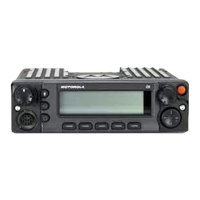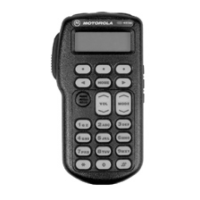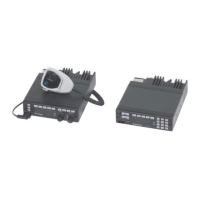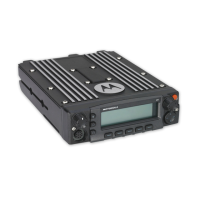5-1
800MHz Transceiver Board
Detailed Theory of Operation 5
Introduction to This
Section
This section of the manual provides a detailed circuit description of an
ASTRO Digital XTS 3000 800MHz Transceiver Board. When reading
the theory of operation, refer to your appropriate schematic and
component location diagrams located in the back section of this
manual. This detailed theory of operation will help isolate the
problem to a particular component.
Frequency Synthesis The complete synthesizer subsystem consists of the reference oscillator
(U304), the voltage-controlled oscillator (VCO)(U307), a buffer IC
(U303), and the synthesizer (U302).
The reference oscillator contains a temperature-compensated
16.8MHz crystal. This oscillator is digitally tuned and contains a
temperature-referenced, five-bit, analog-to-digital (A/D) converter.
The output of the oscillator (pin 10 on U304) is applied to pin 14
(XTAL1) on U302 through capacitor C309 and resistor R306.
Module U307, the voltage-controlled oscillator, is varactor tuned. That
is, as the voltage (2-11V) being applied to pins 1 and 7 of the VCO
varies, so does the varactor’s capacitance, thereby changing the VCO’s
output frequency. The 800MHz VCO is a dual-range oscillator that
covers the 806-825MHz and the 851-870MHz frequency bands. The
low-band VCO (777-825MHz) provides the first LO injection
frequencies (777-797MHz) that will be 73.35MHz below the carrier
frequency. In addition, when the radio is operated through a repeater,
the low-band VCO will generate the transmit frequencies (806-
825MHz) that will be 45MHz below the receiver frequencies. The low-
band VCO is selected by pulling pin 3 high and pin 8 low on U307.
When radio-to-radio or talk-around operation is necessary, the high
band VCO (851-870MHz) is selected. This is accomplished by pulling
pin 3 low and pin 8 high on U307.
The buffer IC (U303) includes a TX, RX, and prescaler buffer whose main
purpose is to individually maintain a constant output and provide
isolation.The TX buffer is chosen by setting pin 7 of U303 high; the RX
buffer is chosen by setting pin 7 of U303 low. The prescaler buffer will
always be on. In order to select the proper combination of VCO and
buffer, the following conditions must be true at pin 6 of U303 (or pin 38
of U302) and pin 7 of U303 (or pin 39 of U302):
• for the first LO injection frequencies 777-797MHz, pins 6 and 7
must both be low;
• for the TX repeater frequencies 806-825MHz, pins 6 and 7 must
both be high;
